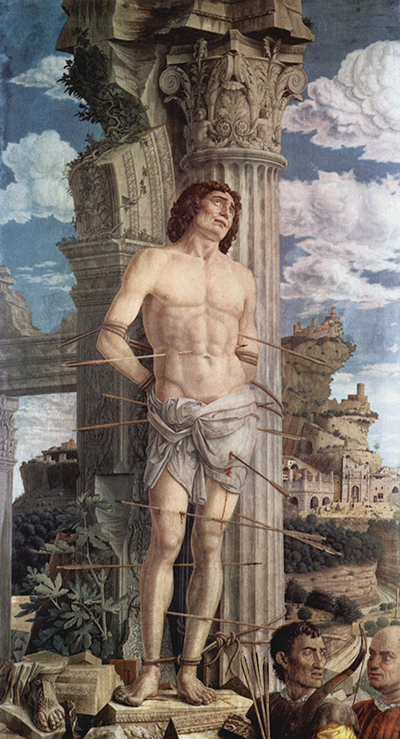In Western religious art, the martyrdom of Saint Sebastian is one of the prominent themes. Saint Sebastian is said to have been killed during the persecution of Christians during the reign of the Roman emperor Maximian.
He is depicted in literature and in the world of art as being shot with arrows as he is tied to a post. It is said that the art piece was made after Mantegna’s recovery from the Padua plague that spread between 1456 and 1457. It is suggested to have been commissioned by the city’s podestà for the celebration of the end of the plague which ended before Mantegna left to Mantua.
Battisti attributed the painting to the Book of Revelation. At the top left corner, a rider is present who represents Saturn, the Roman-greek god. In the ancient days, Saturn was considered to relate with the passage of time, and all that was left behind was destroyed.
The painting provides an expression of Mantegna’s love for detailed perfection. This painting can illustrate his influence on Flemish painting. Although oil paint was spreading during his time, Mantegna preferred to use tempera on canvas, which was a refined technique which enhanced his drawing, and which also attenuated the artistic forms and the intensity of the colour, as he drew. This is the method that Mantegna used between 1470 and 1485. The sculpture and renaissance art are beautifully evoked in the coldness of the forms.
The painting, Saint Sebastian, used to be in the church at Aigueperse located in Auvergne. It was presented as a wedding gift in 1481 to Marquis of antua, Federico Gonzaga, Count of Montpensier, Gilbert de Bourbon, and the daughter of Mantegna’s patron. The painting is a reflection of Mantegna’s obsession with antiquity as it also illustrates how he perfected how to present perspective. The body of the martyred saint is viewed in a monumental way when a someone observes it from the top view of the painting. The three painting of St. Sebastian now reside in Kunsthistorisches Museum, Musèe du Louvre in Paris, and Ca’ d’Oro in Venice.




